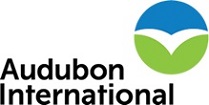 TROY, N.Y.—The nonprofit Audubon International, with its emphasis on environmental education and sustainable resource management, is positioning itself to become a stronger national player in green lodging designation thanks to its strategy to work in select markets—primarily Florida and New York. Audubon International, through its Green Lodging Program, has approximately 150 properties at one stage or another of designation (44 Marriott Vacation Club properties), and more than 3,000 golf courses participating in the Audubon Cooperative Sanctuary Program for Golf.
TROY, N.Y.—The nonprofit Audubon International, with its emphasis on environmental education and sustainable resource management, is positioning itself to become a stronger national player in green lodging designation thanks to its strategy to work in select markets—primarily Florida and New York. Audubon International, through its Green Lodging Program, has approximately 150 properties at one stage or another of designation (44 Marriott Vacation Club properties), and more than 3,000 golf courses participating in the Audubon Cooperative Sanctuary Program for Golf.
Four years ago, the New York State Department of Environmental Conservation launched a new initiative—a two-year pilot program—to certify lodging establishments as “green” for employing environmentally friendly and sustainable practices. At that time, forty-three hotels and inns—spread across every region of New York—signed up for and were certified through the Audubon GreenLeaf program. The pilot program added momentum to the growth of Audubon in New York. Audubon International’s Troy, N.Y. location also made New York a natural fit.
Today, the “GreenLeaf” part of the Audubon program is gone. Instead of earning a rating of from one to five green leaves as part of the designation process, a property can earn either Bronze, Silver, Gold, or Platinum status.
Close Connection with Florida Program
Last August, the Florida Department of Environmental Protection’s Green Lodging Program announced a partnership with Audubon International’s Green Lodging Program that could potentially result in hundreds of Florida properties being added to the Audubon program. According to Fred Realbuto, associate director of environmental programs for Audubon International, when properties in Florida go through the Audubon International Green Lodging Program designation process, they automatically become certified as part of the Florida Green Lodging Program. Those properties gaining certification first through the Florida Green Lodging Program are automatically in the Audubon program as long as they have a site verification visit.
It was last December, in an effort to better recognize designated members of the Florida Green Lodging Program, that the Program’s application was updated in conjunction with Audubon International. The new application makes it easier for a property to achieve recognition in the Audubon International Green Lodging Program, in addition to the Florida Green Lodging Program.
Like the Florida Green Lodging Program, Audubon’s recognizes lodging facilities that have met environmental best practice standards and have demonstrated a strong commitment to water quality, water conservation, waste minimization, resource conservation and energy efficiency. The Audubon application also considers communication and education, and indoor air quality.
Staggered Fee Structure
Properties seeking designation through the Audubon program pay from $350 in the first year to $1,500 in the first year, depending on the number of rooms. Fees in the second and third years are less, as properties do not have to go through the entire designation process again until year four. After submitting the application, Audubon will assign a preliminary rating and prepare a report that outlines how the property can achieve a higher eco-rating in the future. A site visit is then conducted to verify and formalize the eco-rating. “The mandatory site visit adds credibility [to the program],” Realbuto says.
Designated properties receive a certificate to display and are free to use the Audubon logo in marketing materials. They are also recognized as “green” on online travel agency sites such as Travelocity, Sabre, Orbitz and Expedia.
In regard to what separates the Audubon International Green Lodging Program from others like it, Realbuto says, “Our goal is environmental education. Our goal is to help people help the environment where they live, work or play.”
Regarding the future of the Audubon International Green Lodging Program, Realbuto says, “We would like to be working more with states.”
***This is the first in a series of articles on green lodging certification programs. To see the second article in the series, click here. To read the third article, click here. To read the fourth article, click here.
Click here for more information on Audubon International.
Glenn Hasek can be reached at editor@greenlodgingnews.com.





